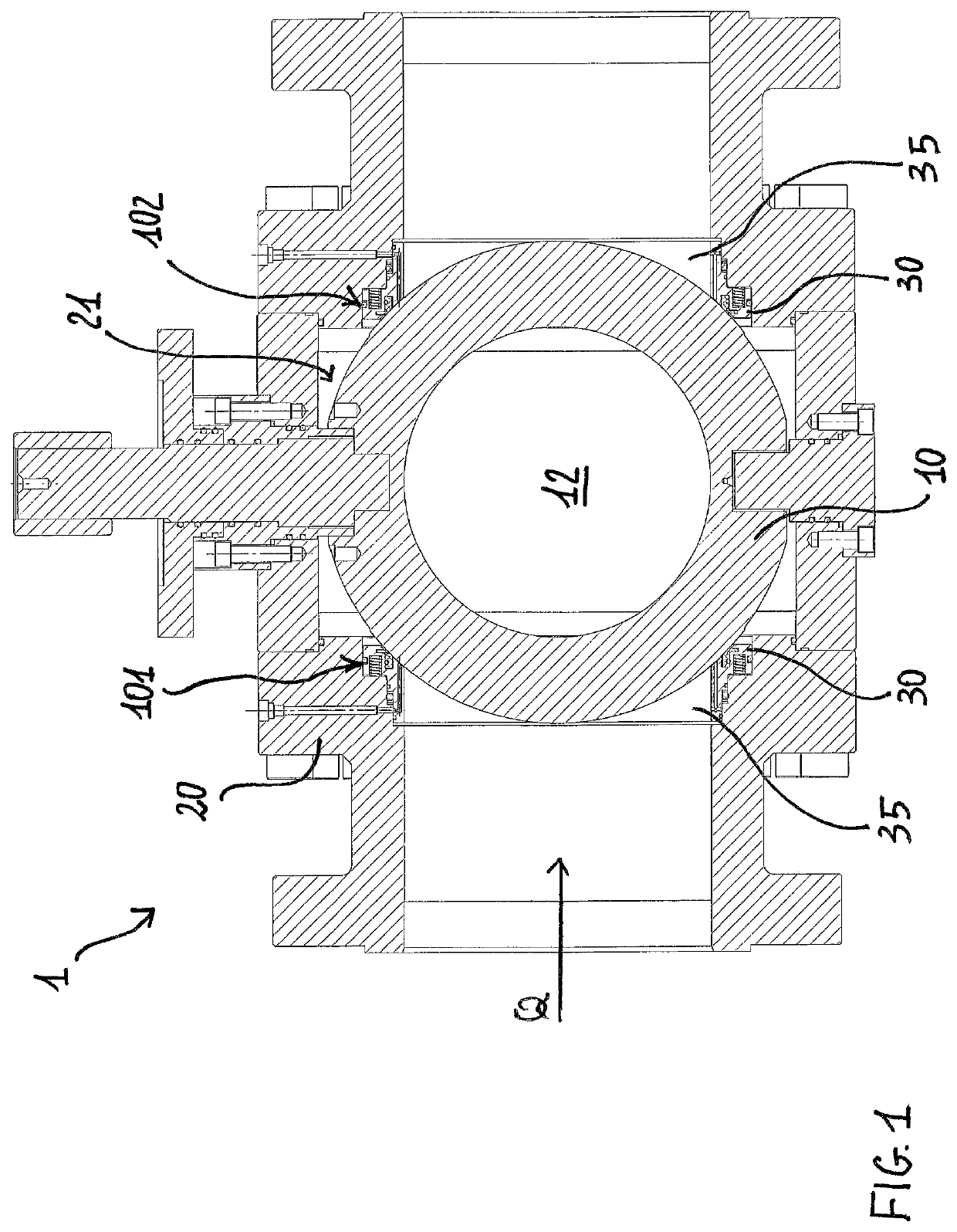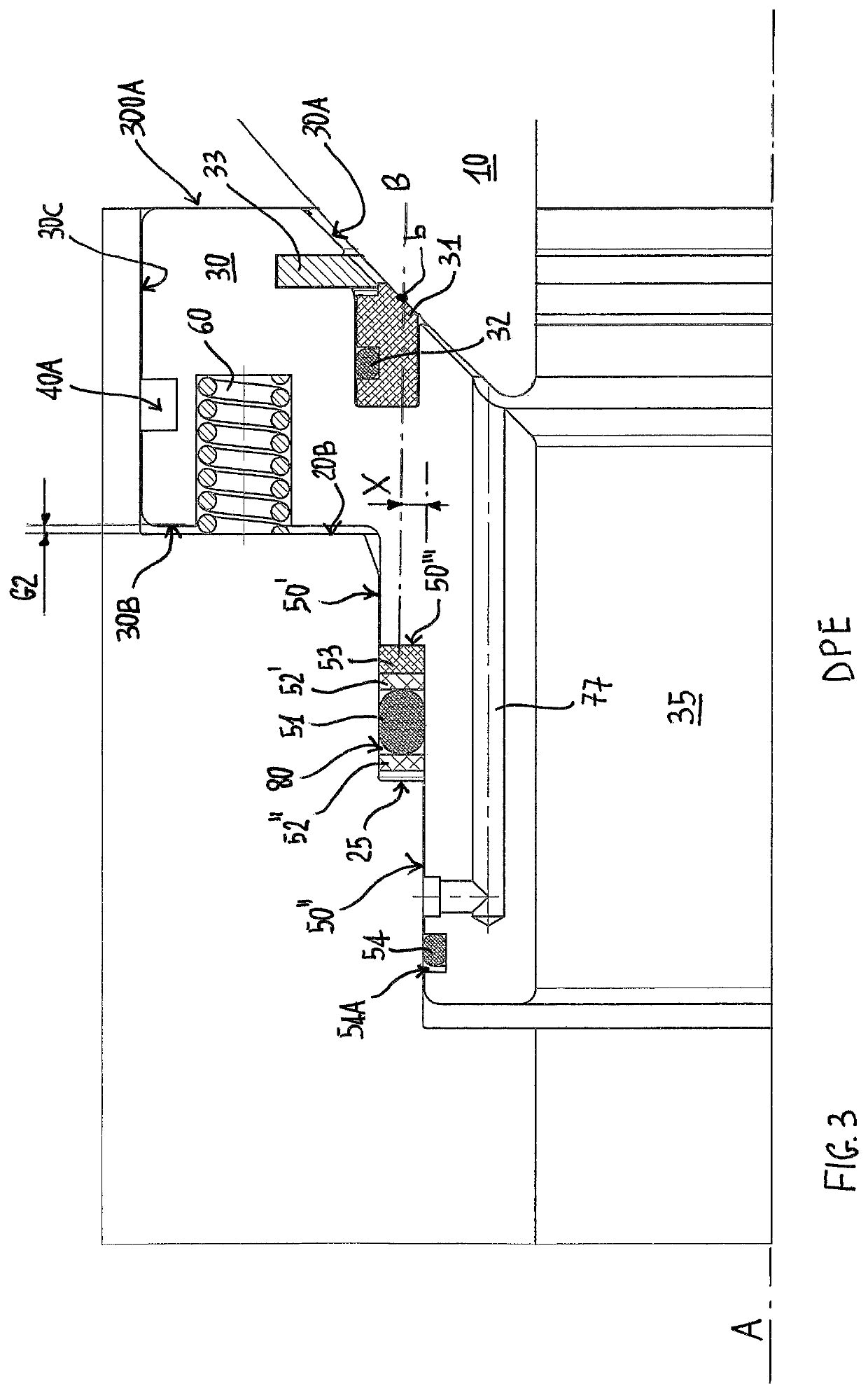Sealing assembly for ball valves and ball valve comprising such a sealing assembly
a sealing assembly and ball valve technology, applied in the direction of valve arrangements, plug valves, mechanical equipment, etc., can solve the problems of not being able to use the seat designed for a spe valve in a dpe valve, the sealing assembly cannot be sealed, and the sealing assembly is not flexible functionally, so as to achieve the effect of improving the sealing
- Summary
- Abstract
- Description
- Claims
- Application Information
AI Technical Summary
Benefits of technology
Problems solved by technology
Method used
Image
Examples
Embodiment Construction
[0041]With particular reference to FIG. 1, a valve 1 of the “trunnion” type is shown, comprising a sealing assembly according to the present invention. The valve 1 is intended to be installed on a fluid pipe and comprises a body 20 which defines a housing 21, in which an internally hollow ball 10 is accommodated, which is adapted to close the fluid flow Q and create a passage gap 12 for the flow itself, as known for valves of this type. The valve 1 shown comprises a first sealing assembly 101 and a second sealing assembly 102 operatively associated with the ball 10 to achieve the fluid sealing on opposite parts of the ball 10, respectively upstream and downstream of the fluid flow inside the valve. In particular, the two systems 101,102 achieve the sealing at least when the ball 10 is in closed condition. Hereinafter in this description, reference will be made to the first sealing assembly 101 which acts upstream of the ball 10, but the same considerations also apply to the sealing ...
PUM
 Login to View More
Login to View More Abstract
Description
Claims
Application Information
 Login to View More
Login to View More - R&D
- Intellectual Property
- Life Sciences
- Materials
- Tech Scout
- Unparalleled Data Quality
- Higher Quality Content
- 60% Fewer Hallucinations
Browse by: Latest US Patents, China's latest patents, Technical Efficacy Thesaurus, Application Domain, Technology Topic, Popular Technical Reports.
© 2025 PatSnap. All rights reserved.Legal|Privacy policy|Modern Slavery Act Transparency Statement|Sitemap|About US| Contact US: help@patsnap.com



